"Smart Growth" and "New Urbanism" Compared with "Large Lot Zoning" (Tom Lane) [ Home Page – Click Here]
(May 17, 2017) – Traditional "Large Lot Zoning" is "Greener" than "Smart Growth" within Urban Growth Boundaries . . . Copyright 2009 – 2017 . . . Tom Lane . . . Photographing California, Arizona, Nevada, New Mexico, Colorado, Utah, Oregon, and Seattle, Washington.
(November 30, 2011) Durango and Southwest Colorado Smart Growth – La Plata County Comprehensive Plan Cancelled
(Tom Lane, November 30, 2011, revised February 8, 2012) In November, 2011, La Plata County, in Southwest Colorado, cancelled The La Plata County Comprehensive Plan, intended for the next 20 years of development, reported by the Durango Herald. La Plata County (pop = 48,000) is home of the outdoor recreation mecca and natural gas rich Durango, Colorado (pop = 17,000, elevation 6,500′). Apparently, the plan was cancelled due to fierce arguments among the commissioners and citizens, including allegations of a U.N. conspiracy under “U.N. Agenda 21.”
Another article appears in The Pine River Times, from nearby Bayfield, Colorado (pop = 1,700). Public comments on the plan’s demise, will be taken on December 8, 2011, when Donald Elliot, Denver City Planner and author of the book “A Better Way to Zone,” will speak. And, see this February, 2012 article in High Country News, entitled: “Fearful of Agenda 21, an alleged U.N. plot, activists derail land-use planning.”
Why is Planning Necessary in the Middle of Nowhere?
Durango is a very typical, scenic, liberal, college / tourist town in the Southwest, with both Mormon and Catholic business interests going back several generations. It’s surrounded by thousands of square miles of very conservative ranchland, farmland, and national forests at the base of the San Juan mountains.
Durango is very remote; 4 hours from Albuquerque, and about 6 hours from Denver and Salt Lake City. With only 50,000 people in La Plata County, one wonders why La Plata County paid the non-profit land use planning agency in Tucson, The Sonoran Institute, a total $750,000 for the 400 page comprehensive plan. Why didn’t La Plata County Officials use their own planners to develop a plan? Why didn’t they use this money to feed the hungry or house the homeless?
Nevertheless, La Plata County is fast growing, exurban county attracting baby boomer retirees, and also young singles and couples into non-competitive outdoor sports. There is rafting in the Animas River, thousands of mountain biking and hiking trails, and many ski areas are nearby, including Telluride. Therefore, some planning should occur, but clearly $750,000 to a non-profit consultant was fiscally irresponsible.
This outrageous waste of taxpayer money cost each resident of La Plata County $12.50. That is, if you divide the cost of the plan ($750,000) by the number of residents (50,000), you get $12.50. However, this does not include the gas money driving for dozens of miles, in the high desert and pine forests, to 150 public meetings with County officials.
What Was the Plan’s Purpose?
The county was operating under the previous Comprehensive plan, and now probably continues to do so given that the County threw out the new million dollar plan. So why did they need a new plan? Clearly, the place is growing, and is an attractive place to mountain bike, go to college, or retire. However, the population is so low that any environmental impacts of even a tripling of the population would be minimal. In fact, I’d be much more concerned about any remaining radioactive uranium tailings, since Durango was the nation’s first superfund site, mining uranium for nuclear bombs in Los Alamos, New Mexico.
The county has been growing in a way that is both spontaneous and reflects the goals of newcomers. People moving in to Durango and adjacent cities prefer living in a home in historic downtown Durango, or, on a “ranchette” with acreage and trees.
So what did the Sonoran Institute and the plan suggest? Well, of course – “smart growth,” two words that nobody in the county wants to hear.
The City of Durango Started Smart Growth Principles Years Ago
The City of Durango began policies to create “infill,” with smart growth towers, townhomes, and everything else that you see at other smart growth cities on this web site. How sad to take such a small town (just 18,000 people), and increase density, when there’s plenty of room for everyone in Durango to have 10 or more acres in all of La Plata County.
The new La Plata County Comprehensive Plan wanted to extend smart growth to other areas in the county. But that’s not what people want. Folks who move to Durango, or any other small western tourist town, want low density. They are tired of tall towers in in Smart Growth havens such as Denver, Boulder, Seattle, and Portland. They want a cabin on forested acreage, certainly not the 4th floor of a condo tower in downtown Durango. The La Plata County Comprehensive Plan and zoning in Durango encouraged high density, smart growth infill townhomes, with very few one acre lots for cabins in the woods.
Here’s the “Skyridge” smart growth development in Durango:
Developable Land Limited by the City of Durango and the New La Plata County Plan
As you’ll see on the City of Durango comprehensive plan below, at least two thirds of the City Limits is open space. The remaining land is divided between high density mixed use , and lower density single family estates. The City places a priority on mountain bike trails and developing smart growth condos, as I’ve seen when visiting the town.
Therefore, the supply of land for Durango’s most desired product – single family homes on one acre lots – is scarce. In economics, scarcity especially when combined with high demand causes bubbles. Unfortunately, Durango and La Plata County will experience a gigantic bubble in the next decade, as baby boomers retire in droves, due to land rationing from the City of Durango and the La Plata County Comprehensive Plan. Currently, the average cost of a home in Durango on Trulia is about $300,000, compared to $150,000 in nearby Albuquerque.
Specifically, as shown on the map below, the La Plata County Comprehensive Plan designates 99% of La Plata County (including part of Durango) for 10 to 35 acre parcels. Only 1% remains for 6 other categories, with lot sizes ranging from 3 acres down to high density, Seattle, Boulder, and Portland style, mixed-use, “smart growth” apartments and condos.
So far, Durango has not experienced a housing bubble or high unemployment. However, they have destroyed their once historic downtown with a massive infill project in recent years, increasing population and traffic in its downtown area with townhomes and “smart growth towers.” In addition, the City has built smart growth townhomes along the edge of town, such as “Skyridge,” and the one below:
Specific Reasons why Durango and the County Could Experience a Housing Bubble
Ultimately, Durango will experience a housing bubble, for many reasons. The county might not, since they threw their own smart growth plan out the window.
First, when you upzone the city center, and downzone the edges of town and surrounding countryside (with the La Plata County Comprehensive Plan combined with the City of Durango zoning), basic land economics predicts that prices will rise for homes closest to the city center.
Second, downzoning to 5, 10, 20, and 40 acre parcels ultimately increases their cost.
Dr. Richard Morrill of the University of Washington in Seattle in his classic monograph, “Myths and Facts of Growth Management,” writes:
“Large lot zoning creates tracts of land too small to make farming and forestry feasible, and too large for many homeowners to afford, therefore encouraging the development of estates for affluent owners, who will enjoy tax breaks for building on rural land …
These 5, 10, and 20 acre lots represent an unfair tax subsidy to The Rich, because the land is protected from paying higher property taxes by being classified and taxed as rural, open space, or farm land.”
Certainly, downzoning is not a liberal policy that encourages home ownership for the middle class. As Durango continues its rapid growth, the scarcity of quarter acre to one acre lots within Durango’s city limits will lead to a housing bubble. Ultimately, even without the county plan, large parcels outside the City limits will increase in price, due to the high demand for country living in exurban La Plata County.
Ultimately, due to its own strict smart growth zoning, Durango will be just as expensive as other Elite towns in Colorado, such as Boulder, Vail, and Aspen. Of course, as with every other city who upzones to high densities and for infilling, the market will eventually crash, probably within 10 to 20 years after the existing developable land has “filled up.”
Large Lot Zoning Fails to Preserve Native Species
Morrill continues that a “checkerboard pattern” of 5, 10, 20, and 40 acre estates are impossible to conserve. Since they are privately owned, they have no public access. Environmental groups and trail groups have an extreme difficulty purchasing lands in a checkerboard pattern. Since the Sonoran Institute claims to preserve natural habitat, it’s amazing that they don’t understand this. These private lands should be preserved from the start with philanthropic monies, as large regional parks for trails and native species.
Large Lot Zoning causes Long Commutes and More Air Pollution
Since Durango is at least two thirds parks and open space, with few lands designated for single family detatched housing, then folks will commute from other areas of La Plata County, if not from Farmington, New Mexico where land is even cheaper. This wastes gas and causes more air pollution than necessary.
Since most people do not want townhomes and small homes with tiny yards, such as at Skyridge, they will live on larger properties and commute 10 to 20 miles to Durango, Bayfield, the Ute Casino, and other centers of employment. Here is a typical unappealing smart growth street, with gravel strips, and no native Pondersoa Pine trees, in Durango’s smart growth Skyridge development:

A very unappealing neighborhood in the Durango Skyridge smart growth development, with tiny yards and gravelscaping, and no native Ponderosa Pines or native chaparral shrubs.
Survey: Residency in Smart Growth Towers is Temporary
Like Boulder, Durango in some areas has become a haven for increasingly unsightly smart growth towers and townhomes. New residents of Durango don’t want to live in these forever. They prefer homes on one acre lots, and there’s plenty of land in La Plata County for everyone to have at least 100 acres, if not 1,000 ! (Pop. = 50,000 persons)
Dr. Peter Howley in Ireland found the residency in high density environments is temporary:
“[O]ver 77 per cent of respondents feel that it is either likely or very likely that they will move from their dwelling unit in the next 5 years. Of particular concern for urban compaction efforts is that the vast majority of these respondents who all currently reside in an apartment in the central city do not view apartment dwellings, as suitable for long-term living as just a quarter (24.5 per cent) of respondents in the survey feel that they will be living in an apartment in the future.
Almost half (45.2 per cent) of respondents foresee themselves as living in a detached house in the future, with a further 15.7 and 12.6 per cent reporting that they feel they will be living in a semidetached or terraced house respectively.”
Why the La Plata County Comprehensive Plan is Bad for the Growth of Durango and La Plata County
Folks on the West Coast considering moving to Durango would not move there with a Comprehensive Plan. Reason: Here on the West Coast, we have 30+ years experience of unaffordable housing and foreclosures, due to comprehensive plans and smart growth. Every place with smart growth, urban growth boundaries (or the equivalent), and mandatory large lot zoning, ultimately bubbles, and then crashes.
When nearly 99% of La Plata County is zoned for 35 acre parcels under the new plan, then newcomers in the next 20 years aggressively compete for the remaining 1%. This drives up the cost of land, since demand for rural land is very high among young families and baby boomer retirees moving to the 4 Corners area. However, a housing boom based on speculation from out of state developers is not sustainable, and ultimately will crash. Look at the horrible housing crash in Bend, Oregon, for example, where the State requires smart growth within very tight urban growth boundaries.
A better approach to land conservation involves providing for recreational access with open space and bike trails. Most people who move to the 4 Corners area are escaping crowded smart growth conditions found in places like San Francisco, Portland, and Boulder. The Frank Lloyd Wright approach of maintaining natural vegetation on large lots is the best way to conserve native species. In Cave Creek, Arizona it is mandatory, by law, to preserve your property’s natural vegetation. In contrast, in most urban environments such as Denver, Portland, and Seattle, native vegetation is clearcut prior to development.
Finally, Durango was ranked #1 by Dr. William Fruth of the Policom Index. This is due to the quality and quantity of local growth. Expect this great ranking to continue without a comprehensive plan. The mandatory rationing of land under a comprehensive plan is a recipe for a housing bubble, as we’ve seen in Bend, Boulder, and other mountain communities. A better way is to expand the park acreage and trails in the City of Durango and La Plata County, leading to increased tourism and species conservation, and minimal impacts on housing affordability. Salt Lake City, Santa Fe, Albuquerque, and Fort Collins also do not have an urban growth boundary, and also do very well on Fruth’s survey. And, as a result, neither of these places have any appreciable housing bubble (compared to the Pacific Coast, that is).
Compared to Bend, Oregon, that understands that residents moving to exurbia wants one acre lots, Durango planners, including their allies at the Sonoran Institute known for opposing development in Phoenix, do not understand what new residents are looking for.
Here’s a development planned for many baby boomer retirees and young families seeking a rural, exurban lifestyle. The red arrow points to the location of the forthcoming “Twin Buttes of Durango,” located West of Durango, featuring passive solar homes, organic gardens, and mountain bike trails for the Eco-conscious homebuyer. This photo is looking west from Fort Lewis College in Durango:

Twin Buttes of Durango, located west of Durango near the red arrow, in unincorporated La Plata County (there is no urban growth boundary).
Download and Save the La Plata County Comprehensive Plan In Case It’s Removed
The Cancelled Comprehensive Plan is at: http://www.laplatacountyplan.com/updates/LPC%20CP%20april%207a%20draft%20v8.pdf,
Make sure to save this PDF to your computer. I am sure that the county has many complaints and will remove it
DENSITIES From the Comprehensive Plan web site above:
” These land use designations identify areas in La Plata County that are suitable for future growth (receiving areas) and areas that are sensitive to development (donor areas) within a new development project application. A development project application under the County’s present process includes Class I and II land use permits, subdivision applications, and map amendments.
Future land use designations are only applicable when a new project application for development is submitted to the County. These designations do not affect the underlying existing or approved uses.
The maximum allowable density credits transferred into a receiving area will be approximately 50% above the maximum density for the designation; the specific base and maximum densities for each designation will be defined in the forthcoming Land Use Code revision.”
*Resource Conservation/Development (RC/D): up to 1 DU/35 ac (donor): areas of high sensitivity to development such as critical wildlife habitat, riparian areas, major drainageways, floodplains/wetlands, and slopes 30% or greater. Density credits within the RC/D area may be transferred at 1 du/10 ac to
areas outside of a RC/D area within a project application.
*Agricultural/Rural (A/R): up to 1 DU/35 ac; or 1 DU /20 ac with 50% set‐aside, or 1 DU/10 ac with 70 % set‐aside (donor except when receiving density from RC/D): areas that historically or are presently agricultural lands that are to be maintained for this use. The densities within the A/R area may also be
transferred to a receiving area within a project application. Permitted uses that support agriculture in the A/R areas may include but are not limited to: agricultural production, small‐scale renewable energy production, home‐based businesses, bed and breakfasts, agro‐tourism, equestrian and boarding
facilities, farmers market and produce stands.
*Rural Residential (RR): up to 1 DU/3 ac (receiving): generally existing low to medium density residential development in established neighborhoods‐i.e., lands that are already committed to residential uses and have been subdivided for a specific development.
*Rurban (R): up to 1 DU/ac; or up to 5 DU/ac when utilizing three of the five community benefit criteria (receiving): an area with a moderate to high development suitability. These areas should be developed in a manner that encourages sustainable community practices such as (a) clustered housing
with min 50% open space set‐aside, (b) bike/equestrian/pedestrian pathways connected to legal access or public lands, (c) renewable community infrastructure (renewable energy, water harvesting, and reclaimed wastewater systems), (d) community facilities such as schools, parks, community centers, (e) multi‐modal transportation (bicycling, equestrian, ride‐share, park and ride and transit provisions).Rurban areas could be adjacent, or within a 1/2 mile, to a designated Rural Center, Mixed Use or Commercial/Employment area.
*Rural Center (RC): up to 8 DU/ac (receiving): these can be existing rural centers, or new centers, which typically have public gathering places or community facilities with a mix of land uses associated with them, such as residential and neighborhood‐scale retail, small businesses, small‐scale renewable energy production and local commercial. Community facilities include schools, post office, community center, recreation facilities, etc., and include two or more multi‐modal transportation provisions (bicycling,
equestrian, ride‐share, park and ride, and transit). Typically this designation will range in size from 5 to 20 acres.
*Mixed Use/Commercial (MU/C): up to 24 DU/ac; 30‐40% lot coverage on non‐residential uses (receiving): Tech centers, Research parks, commercial, small businesses, small‐scale renewable energy production and institutional/civic uses that serve the region and include two or more multi‐modal transportation provisions (bicycling, equestrian, ride‐share, park and ride, and transit). Maximum single family residential lot size is 5,000 sf. Typically this designation will range in size from 10 to 40 acres.
* Industrial/Employment (I/E): 30‐50% lot coverage (receiving): commercial, industrial, small businesses, business park, renewable energy production and institutional/civic uses that serve the region and include two or more multi‐modal transportation provisions (bicycling, equestrian, ride‐share,
park and ride, and transit). Typically this designation will range in size from 20 to 100 acres. Commercial Recreation (CR): up to 5 du/ac (receiving): commercial facility offering leisure or recreational opportunities with lodging and overnight accommodations, and uses such as retail, restaurants, pubs, campground and cabins. May include condominiums and single family residential as secondary uses to support the primary resort/recreation use.
Scenic Corridor Overlay (SCO): (donor): these are corridors with high scenic values and high sensitivity to strip commercial development. These corridors would allow retail and/or residential development that may include standards on building heights, parking areas, landscaped buffers along street setbacks,
monument signage, and no billboard.

2011 La Plata County Comprehensive Plan. NOTE: GREY AREAS represent Federal lands such as National Forests and other protected lands.
Durango Resident Andrew Kayner Established On Line Petition to Support La Plata County Comprehensive Plan
It’s interesting to read the comments from folks on the two petitions on the La Plata Comprehensive Plan, authored by Durango resident Andrew Kayner, who supports the plan. Two petitions:
and:
http://www.change.org/petitions/la-plata-county-board-of-commissioners-reject-the-master-plan
In addition to these petitions, the group “Common Sense La Plata” formed to defend the La Plata County Comprehensive Plan.
The failure of planning commissioners and subsequent failure of petition drives – in addition to the smart growth induced housing crisis nationwide – again demonstrates that Comprehensive Smart Growth Planning is a waste of time. Clearly, it is time to take a “hands off” approach to land use planning, and just use the old La Plata County comprehensive plan for now.
This cartoon in “The Durango Telegraph” shows that residents of La Plata County have not learned to get along when discussing comprehensive planning. Therefore, they are best served to never again discuss the subject.
La Plata County Planning Commissioner Authur Charette Fired over Inappropriate Editorial linking the La Plata County Comprehensive Plan to U.N. Agenda 21
Authur Charette, the Fired Planning Commissioner from La Plata Co., is the most bizarre person I have ever seen published. Here’s his Editorial in The Durango Herald.
Keep in mind that there is no Agenda 21 conspiracy since “smart growth” and urban growth boundaries were developed before Agenda 21 was written in the 1980’s. Smart growth began in Boulder, Colorado in the 1960’s, and in both Oregon and California in the 1970’s. Mr. Charette’s emphasis on a U.N. conspiracy shows that he hasn’t read any of the literature connecting problems with housing affordability to mandatory large lot zoning and smart growth principles.
Governmental implementation of Smart growth has nothing directly to do with UN agenda 21. Instead, in states such as Texas or Colorado, where there’s an absence of state requirements for growth management, it’s up to each local government (i.e. La Plata County and the City of Durango), to decide whether or not to implement smart growth principles, or anything out of Agenda 21. (I have never seen any public document mentioning Agenda 21, and therefore have no direct evidence that local officials have even read Agenda 21.)
Folks like Authur just give a bad name to all of us who oppose smart growth, because we advocate aesthetically pleasing neighborhood design meeting the demands of consumers, and/or affordable housing with private property rights.

The monotonous, cooke cutter Skyridge townhome development creeping just like sprawl on a hillside east of Durango.
Real Conspiracy Theories
Where there IS definitely a problem is smart growth developers and smart growth consultants paying local governments and City Councils, and vice versa. This happened recently in Black Diamond, Washington and was documented by the mainstream media.
There IS ALSO a problem with opponents of smart growth accepting money from Libertarian and Free Market Think Tanks to publish dozens of anti-smart growth and anti-mass transit publications. We don’t know who is paying these organizations, such as the Washington State Policy Center who doesn’t release the names of all of its donors.
For those who oppose smart growth and also believe in an Agenda 21 conspiracy, it’s not the best approach to try to defeat “smart growth” based solely on any alleged connection to Agenda 21. When that happens, most of the public rolls their eyes at yet another conspiracy theory involving the UN.
Therefore it’s best, in my opinion, to show that “smart growth” is aesthetically undesirable, and that it causes housing bubbles and therefore doesn’t result in “affordable housing.”
Furthermore adoption of Agenda 21 or any other UN mandate is voluntary, and is up to the individual cities. There is no world government with officials from the UN sitting in a smoke filled room coming up with secret plans. The UN simply does not control every city council and university urban planning department.
And, there are many places that don’t subscribe to smart growth. Certainly much of the Southern US does not have smart growth or impact fees. Small tourist towns similar to Durango without mandatory smart growth include Santa Fe, Albuquerque, Placitas (NM), Sedona, Cave Creek, Carefree, and Palm Springs among many others.
From a design standpoint, smart growth is such terrible design that one doesn’t need to invoke the name of the Libertarian Party, Constitution Party, or Agenda 21 to oppose it. Smart growth is opposed by thousands of architects, planners, and landscape architects who choose to not incorporate its principles into their communities. This is true even for highly environmentally conscious places listed above. All these places have developed their own “green” ways to plan w/o using smart growth principles.
Tom Lane Banned from the Durango Herald for these comments
A few months ago, the paper published an article on the La Plata County Comprehensive Plan, and another on its sales taxes. I was banned from future postings from the Durango Herald paper and my posts were removed. However, I saved them along with comments from others since frequently my comments are deleted.
Of course, it’s likely that Durango and La Plata County planners have close ties with the Editorial Boards of local papers. They do not appreciate new voices with a knowledge of real estate economics. So it is clear that the County officials did not like my comments opposing the plan, and called the Editorial desk of the Durango Herald asking for deletion.
My Banned Comments about the Plan in the Durango Herald, September, 2011
First, apparently the La Plata County Comprehensive Plan failed to solicit sufficient citizen input, as you can read in this article in The Durango Herald. Therefore, if they don’t like what their own citizens have to say, then it sounds like they have their finger on the delete key at City Hall, and also at the Durango Herald. How sad that the place doesn’t operate like a democracy. They seem to be saying: “It’s wrong to criticize us, even if your criticism is correct.”
http://www.durangoherald.com/article/20110818/COLUMNISTS37/708189986/0/News03
9/23/2011 9:04:04
Tom Lane wrote:
The current 8 land use designations appear at this link. Will these be reduced to 4, as the article states? Is the new map available on line anywhere? Reduce your minimum lot sizes from 35 acre to 1 acre lots. Otherwise, you will see an escalation in land values, and an eventual housing crash, since La Plata County is in very high demand.
Please do not believe any consultants from Oregon, Seattle, or Boulder who tell you that 10 to 40 acre lots “protect the rural character of the land.”
Just the opposite is true. I’ve spend a lot of time in those places. Such private agricultural lands have *NO* plant diversity, have condemned farm buildings, dangerous barb wire, and are NOT cleared for fires. Remember the Boulder fires? The Ashland fire? The Flagstaff fires and floods? Eager, AZ fires?
The only safe and effective way to protect lands for conservation and outdoor recreation is through public ownership and private parks with user fees.
Privately held 35 acre estates under the County plan are not open to the public. Whether its lands in the Boulder greenbelt, or the abandoned 5 to 40 acre grazing lands east of Seattle, or Pinon Juniper scrub east of Bend or east of Flagstaff, such lands are privately owned, not open for trails, are full of old barbed wire, and do not offer plant and animal diversity due to overgrazing.
Whereas a permanently protected 35 acre estate, purchased with private funds and created with land trust organizations, can be restored with native species to create paradise in the high desert. However, 35 acres is too expensive when the number of parcels has been reduced, since 1 acre lots are not allowed. With a less total number of parcels, then the cost of each and every parcel increases, since demand remains constant yet supply diminishes. Basic land use economics.
Therefore, it is easier to buy and conserve smaller parcels, perhaps 1 to 5 acres. Rezoning 97% of the county to 10 to 35 acre lots will increase prices and make it impossible for any conservation organizations, or even the County Parks department, to buy land – since the price has gone up due to a decrease in the total number of parcels.
I would consider moving to your county to work in environmental conservation and farming. However, I know from my experiences in the aforementioned areas that private lands zoned for large lot sizes, in high demand areas, increase in price, and are too expensive to purchase by land trust organizations.
And, since natural gas is a boom and bust industry, then La Plata County needs a sustainable sales tax. Purchasing abandoned or unproductive private parcels for recreation and farming, offer hundreds of years of unlimited recreational and farming opportunities, perhaps even organic farms.
If you pass this plan with the 10 to 35 acre minimums, then as a conservationist, I would not wish to deal with a county where 10 to 35 acre estates will more than double in price, excluding poor and middle class newcomers from home ownership, and where wildfires will burn through brush on 35 acre estates owned by Texas and New York second homeowners who don’t know anything about forest ecology.
Respectfully submitted,
Tom Lane
9/23/2011 7:30:09 am
Another post –
Would whoever clicked “disagree” with my comment on 35 acre minimums wish to elaborate?
Again, when you downzone large areas of a county to a minimum lot size of 35 acres, then the private holdings are more difficult to purchase for public use, because they are more expensive.
In addition, if you have 100 35 acre estates, versus 10,000 1/2 acre to 2 acre estates, then the value of each 35 acre estate is higher than if they were 1/2 acre to 2 acres.
Why? Because of supply and demand. Demand for large parcels of land in exurbia is very high in La Plata County. If there is a less number of 35 acre properties than under a 1 to 5 acre scenario, then the value of each 35 acre parcel will increase.
Therefore, if the number of rural parcels in La Plata Co. is reduced by downzoning to a minimal lot size of 35 acre, then the price per parcel increases.
Then, if a Conservation organization wishes to buy lands in association with local governments, it is more expensive than it would otherwise half to be.
As one who advocates Philanthropic organizations that buy land for public use, for building trails and species preservation, I therefore do not agree with policies that make purchasing land for conservation purposes more expensive.
See the Cave Creek, AZ Desert Foothills Land Trust map of parcels they wish to purchase. Many of these are small in size, and can be easily purchased – If link does not work please try their main page.
Click to access Priorities_2009-02-12ver91.pdf
I believe that an understanding of land use economics is critical if we are to conserve our wild landscapes and endangered species for future generations. The 4 corners have a diversity of species from several ecosystems that converge near Durango-Bayfield.
Furthermore, La Plata County should make sure that its comprehensive plan will ensure increasing tax revenues for centuries. Since the population obviously can’t grow to 300,000, then tourism in botanical reserves is vital, along with mountain biking, rafting, and sking.
Since land has been suddenly downzoned and made difficult to purchase for trails, mountain bike parks, whatever, then ultimately current tax revenues will plateau, especially when natural gas reserves are depleted.
That is why a careful study of botanical and recreational resources is required for any comprehensive plan. I have yet to read any comprehensive plan that includes any mention of the value of native plants. Whereas the botanists understand this, such as “KSWILD.ORG” in Ashland, Oregon, who proposes a new botanical reserve with 3200 native plants in the Siskiyous.
Respectfully submitted,
Tom Lane
Another Post –
You may elect to take a NIMBY approach in your post by declaring that you do not appreciating my ideas. However, I will choose to live irregardless of what you have to say. And, I can assure you that the majority of residents, who are considering Durango, value preserved natural areas … and cannot afford expensive million dollar estates that will devour these proposed 10 to 35 acre parcels …
Again, basic land economics teaches that when you take 97 percent of the county and downzone it to 10 to 35 acre parcels, then the total number of parcels for sale decreases. Given constant and even increasing demand, as baby boomers retire and move to “exurban” areas such as Durango, then a scarcity of land parcels means that they go up in price.
Furthermore, I might add that zoning for mixed use and 1 to 3 acre parcels near existing highways is not sustainable. From the map, there is clearly not enough land in the 1 to 3 acre category, that most newcomers prefer for ranchettes. So, folks seeking acreage will buy 35 acre properties and have very long commutes, contributing to our dependence on foreign oil.
Fortunately, I might add that neither Santa Fe nor Bernalillo Counties have the very restrictive zoning that La Plata county proposes. Since these New Mexico counties do not engage in exclusionary zoning in their comprehensive plans, then they will sustain the construction of affordable housing for a much longer period than La Plata County.
It would be helpful if there were more land use economists forming these comprehensive plans.
Tom Lane
9/24/2011 2:33:35 am
Another Reader, C MacKown, wrote:
Tom 9 – Please continue to reside where you are; La Plata county does not need you or your ideas. The marketed cost per acre typically increases as the parcel size decreases. So to purchase many small contiguous parcels instead of a large parcel “to protect lands for conservation and outdoor recreation” would be very costly. La Plata county is blessed with a balance of irrigated agricultural lands and access to non-irrigated grazing lands that supports an important economic foundation of the county.
The idea that “Purchasing abandoned or unproductive private parcels for recreation and farming, offer hundreds of years of unlimited recreational and farming opportunities, perhaps even organic farms.” does not make sense for increasing the agricultural base in the county. Lands that are abandoned or unproductive are unlikely desirable for agricultural use, even for niche organic farms that depend on a small base of clients that have disposable income or a desire to make sacrifices to support these enterprises.
Tom9 wrote –
Clarification: The natural gas controversy is in Ashland-Medford and also Coos Bay, Oregon.
Finally, minimum lot sizes – i.e. 35 acre minimums for private estates in unincorporated La Plata County – do not preserve land for public recreation. Therefore, it’s best to set the minimum size at a lower level (an acre or two). This encourages more development over time, resulting in more property and sales taxes. Then, the taxes can be used to purchase large properties for parks and recreation. King County, Washington (near Seattle) faces the same issue that you do, with 5 acre minimums in rural areas. The 5 acre properties only are available to the rich, and there are no public trails and very few parks in Eastern King County. If the minimum was 1 acre, then taxes could pay for purchasing greenways for recreation.
Tom Lane wrote –
Re: Andrew Dashiell … Cities without Urban Growth boundaries generally have less foreclosures, with less pronounced housing bubbles, and more affordable housing, and less foreclosures. Examples: Durango, Fort Collins, Salt Lake City, Santa Fe, NM, Albuquerque, NM, and Austin, TX.
I understand your concern about ultimately providing an Urban Growth Boundary (UGB) at some point for Durango due to population growth. However, the City and County have decided that this is inconsistent with current goals. The current zoning structure emphasizes significant infill, with Expansion of the City limits of Durango are handled in a traditional manner, by way of annexation agreements with La Plata County (such as the Twin Buttes Development).
Furthermore, there are many other ways of handling growth and preserving parks and open space. The California Association of Realtors opposes urban growth boundaries, and offers these suggestions:
http://www.car.org/governmentaffairs/localgovernmentaffairs/ugb/
I strongly agree with you about the pressures that Boulder faces from the surrounding counties (part of the urban growth boundary under DRCOG, Denver Regional Council of Governments). Impact fees for remodeling are enormous, and light rail is very expensive.
I disagree with you that the UGB works for Boulder, since density has reached high levels with heavy traffic and high ozone pollution. I could never live there due to sinusitis. It makes no sense to crowd people into towering condos in Boulder, when they could just expand the UGB into the wild grasslands north of town, and give everyone an acre for an organic farm, in the tradition of “Broadacre City” from Frank Lloyd Wright.
And, You Wrote, see my response:
“And while planning and development restrictions of the type seen in Boulder today are neither appropriate or necessary here, population pressures will slowly but surely continue to mount. As they do, the types of rules and regs that Tom 9 seems to find antithetical to economic health will in fact need to be strengthened and extended if residents of Durango and La Plata County want to thrive.”
Impact fees, urban growth boundaries, and other methods of exclusionary zoning are condemned as second best solutions to growth management by the worlds’ leading Demographers and Land Use Economists, i.e. Dr. Richard Morrill, Univ. of Washington; Dr. Nicole Stelle Garnette, Notre Dame; Dr. Alex Anas; SUNY-Buffalo; list of professors here – https://smartgrowthusa.wordpress.com/professors-do-not-like-against-oppose-smart-growth-new-urbanism-university-urban-planning-departments-architecture/
Dr. William Fruth’s #1 ranking for Durango reflects the pro-growth attitude of Durango. And, unlike places such as Medford-Ashland, Durango is not paranoid of Natural Gas (a major pipeline is a big controversy over there right now).
Smaller US cities that have high impact fees and urban growth boundaries score very low on his list (i.e. Medford-Ashland, Oregon; Eugene, OR; Flagstaff, AZ; etc.). Salt Lake City was #1 on his list for large cities (Metropolitan areas), and they have no UGB – http://www.policom.com/index.html
Finally, Frank Lloyd Wright advocated the best model in the history of American Architecture – the Broadacre Concept, with 1 to 5 acre lots for everyone with organic farms, and class sizes of 10 students or less.
You could consider Wright’s Broadacre approach in Durango, and establish one acre Organic Farms everywhere, by eliminating the minimum lot sizes of 35 acres for outlining areas in your new Comprehensive Plan. -Tom Lane
Andrew Dashiell wrote:
Re: Tom 9, I can’t speak to Bend, Eugene or Ashland, but I can speak to Boulder. I don’t think it’s appropriate to compare Durango and Boulder in the manner Tom 9 does. I’m a 30-year Boulder resident and a 7-yr Durango resident. I spend a lot of time in both, considering them to be the two finest places in Colorado that anyone could call home. But the pressures that Boulder faces from the collective impacts of 100,000 residents, an additional 200,000 county residents (in a 750 sq mi county) and an additional 2.7 *million* residents of the greater Denver metro area are *much* different than those faced by Durango. In comparison, Durango currently accomodates ~17,000 City residents, another ~35,000 County residents (in a 1700 sq mi area) and no discernible metro area as far as I can see.
I will be among the first to admit that Boulder rules and regulations regarding new construction (or, heck, even adding on to your own existing place!) are onerous. They are complicated. They are expensive. Sometimes more onerous, complicated and expensive than they maybe need to be. But they work for a city in Boulder’s situation. The Urban Growth Boundary (UGB) works for Boulder. Indeed, I’d say that all are and will continue to be essential to keeping Boulder the vibrant, exciting, active, stimulating and generally enjoyable community that it is. And I can assure you, Boulder has no foreclose problem. Yes, they’ve been up since the start of the Great Recession but relatively speaking, Boulder is doing quite well. As for property and sales taxes? Well, Boulder doesn’t have natural gas to allow it to offer residents the state’s 3rd or 4th lowest property tax rates. Until the gas runs out, this is a *huge* boon to La Plata County.
For now and for some time to come, Durango and LaPlata County have the luxury of low population pressures combined with an ability to underwrite services and investments out of proportion to its per capita income. This is a good thing and, done wisely, will set us up well for the day when the gas is gone. And while planning and development restrictions of the type seen in Boulder today are neither appropriate or necessary here, population pressures will slowly but surely continue to mount. As they do, the types of rules and regs that Tom 9 seems to find antithetical to economic health will in fact need to be strengthened and extended if residents of Durango and La Plata County want to thrive. I can assure you, if La Plata County ever gets to 300,000 residents, it’ll be a better place to live if it follows the Boulder model rather than, say, the Adams County/Aurora model.
Having said all that, yes, the news about sales tax revenues is very good!
Tom Lane wrote –
9/21/2011 10:39:54 am
Given Durango’s emphasis on recreation and organic farming, it really surprised me that your recent comprehensive plan has 35 acre miniimums. As an outsider who studies land use economics, this sounds like a tactic of exclusionary zoning to decrease future population growth, without an urban growth boundary, but I have no idea. A more appropriate minimum size might be half an acre, as in Cave Creek, AZ, where all native plants must be preserved, by law. Indeed, Cave Creek / Carefree / North Scottsdale have purchased very large areas of Sonoran Desert, from the McDowell Preserve to state trust lands in Cave Creek. -Tom9
Re: Andrew Dashiell … Cities without Urban Growth boundaries generally have less foreclosures, with less pronounced housing bubbles, and more affordable housing, and less foreclosures. Examples: Durango, Fort Collins, Salt Lake City, Santa Fe, NM, Albuquerque, NM, and Austin, TX.
I understand your concern about ultimately providing an Urban Growth Boundary (UGB) at some point for Durango due to population growth. However, the City and County have decided that this is inconsistent with current goals. The current zoning structure emphasizes significant infill, with Expansion of the City limits of Durango are handled in a traditional manner, by way of annexation agreements with La Plata County (such as the Twin Buttes Development).
Furthermore, there are many other ways of handling growth and preserving parks and open space. The California Association of Realtors opposes urban growth boundaries, and offers these suggestions:
http://www.car.org/governmentaffairs/localgovernmentaffairs/ugb/
I strongly agree with you about the pressures that Boulder faces from the surrounding counties (part of the urban growth boundary under DRCOG, Denver Regional Council of Governments). Impact fees for remodeling are enormous, and light rail is very expensive.
I disagree with you that the UGB works for Boulder, since density has reached high levels with heavy traffic and high ozone pollution. I could never live there due to sinusitis. It makes no sense to crowd people into towering condos in Boulder, when they could just expand the UGB into the wild grasslands north of town, and give everyone an acre for an organic farm, in the tradition of “Broadacre City” from Frank Lloyd Wright.
And, You Wrote, see my response:
“And while planning and development restrictions of the type seen in Boulder today are neither appropriate or necessary here, population pressures will slowly but surely continue to mount. As they do, the types of rules and regs that Tom 9 seems to find antithetical to economic health will in fact need to be strengthened and extended if residents of Durango and La Plata County want to thrive.”
Impact fees, urban growth boundaries, and other methods of exclusionary zoning are condemned as second best solutions to growth management by the worlds’ leading Demographers and Land Use Economists, i.e. Dr. Richard Morrill, Univ. of Washington; Dr. Nicole Stelle Garnette, Notre Dame; Dr. Alex Anas; SUNY-Buffalo; list of professors here – https://smartgrowthusa.wordpress.com/professors-do-not-like-against-oppose-smart-growth-new-urbanism-university-urban-planning-departments-architecture/
Dr. William Fruth’s #1 ranking for Durango reflects the pro-growth attitude of Durango. And, unlike places such as Medford-Ashland, Durango is not paranoid of Natural Gas (a major pipeline is a big controversy over there right now).
Smaller US cities that have high impact fees and urban growth boundaries score very low on his list (i.e. Medford-Ashland, Oregon; Eugene, OR; Flagstaff, AZ; etc.). Salt Lake City was #1 on his list for large cities (Metropolitan areas), and they have no UGB – http://www.policom.com/index.html
Finally, Frank Lloyd Wright advocated the best model in the history of American Architecture – the Broadacre Concept, with 1 to 5 acre lots for everyone with organic farms, and class sizes of 10 students or less.
You could consider Wright’s Broadacre approach in Durango, and establish one acre Organic Farms everywhere, by eliminating the minimum lot sizes of 35 acres for outlining areas in your new Comprehensive Plan. – Tom Lane
END OF COMMENTS, from Tom Lane and Others, that were DELETED BY THE EDITORIAL STAFF OF THE DURANGO HERALD . . . in 2011 . . .









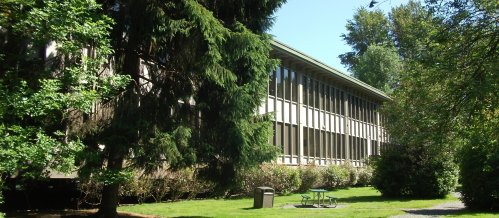


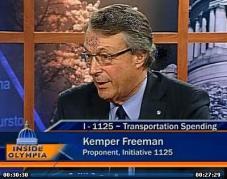






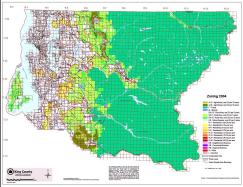
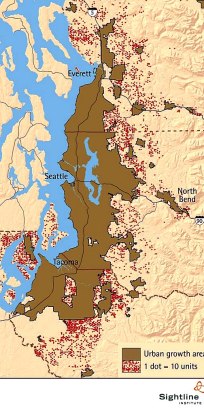
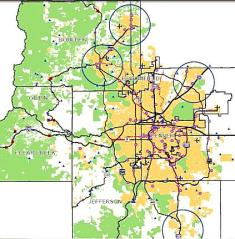
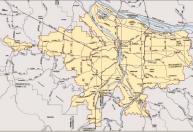
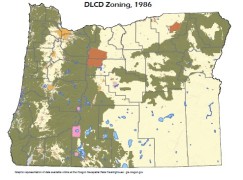
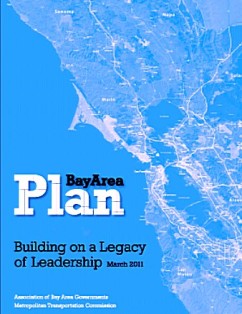

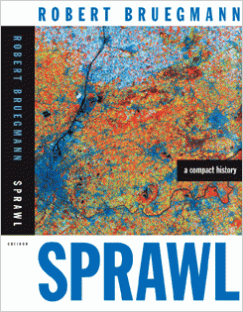

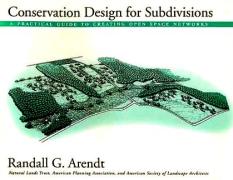
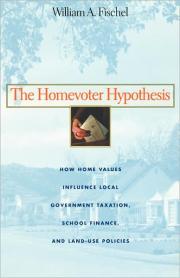



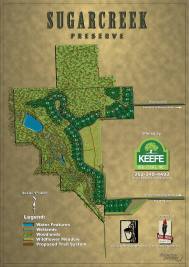

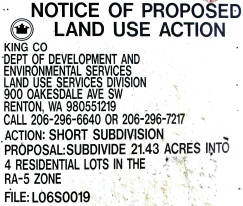
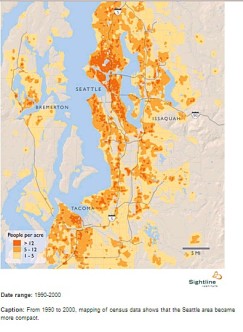

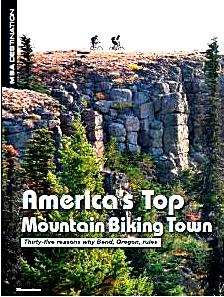
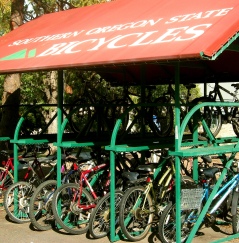

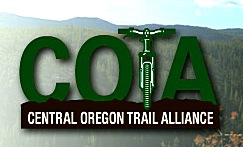






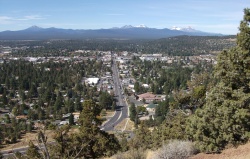




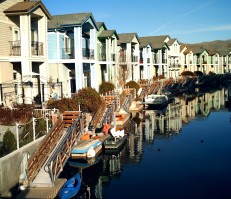


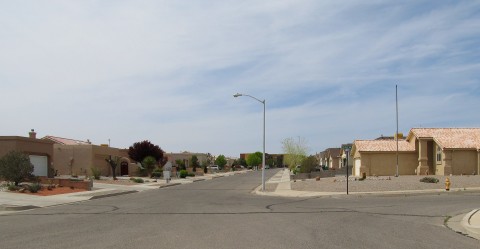
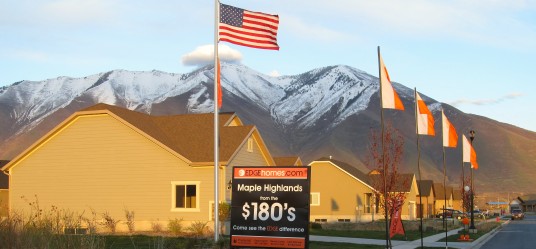
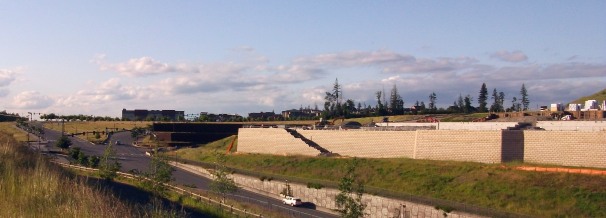


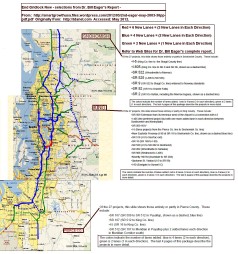
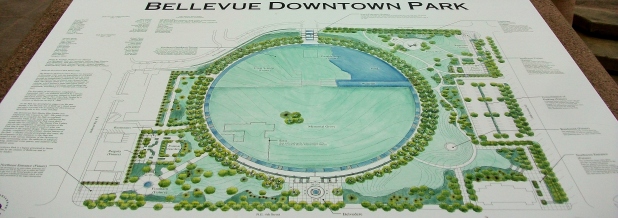


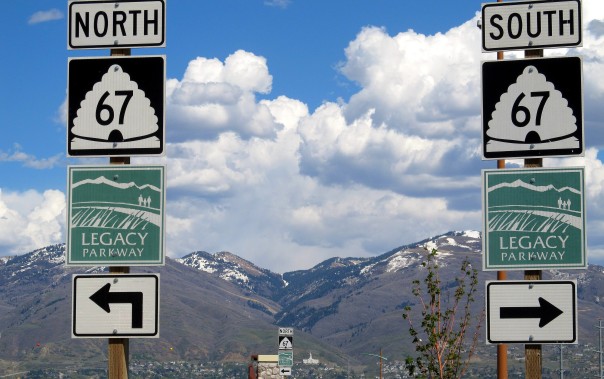
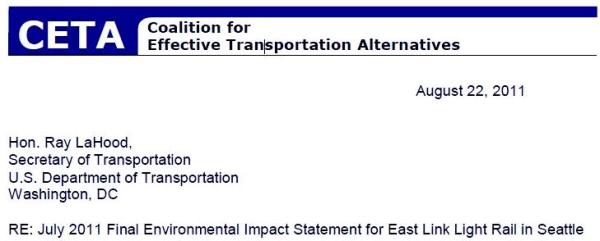
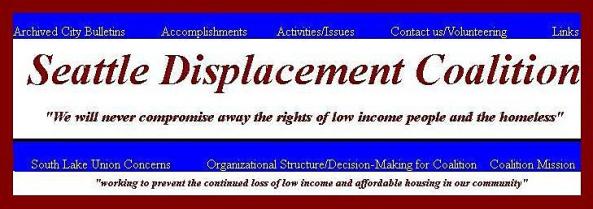



Durango used to be an inexpensive place to live before all these rich liberals came in from the east coast and California. I don’t like it now and am looking for a more peaceful place either in Colorado or perhaps in New Mexico as you suggest. The average cost of a home is over $300,000 it is ridiculous here. Not as expensive as Boulder but still WAAAAAY too expensive. RyanH
Saw your comments in the Durango Herald before they were banned. Sorry that our liberal paper would do that to you! The city only caters to tourists and rich liberals, not us service workers. I’m looking at Santa Fe since at least they have a minimal wage (LIVING WAGE) of $10 an hour. See http://www.santafenm.gov/DocumentView.aspx?DID=3737